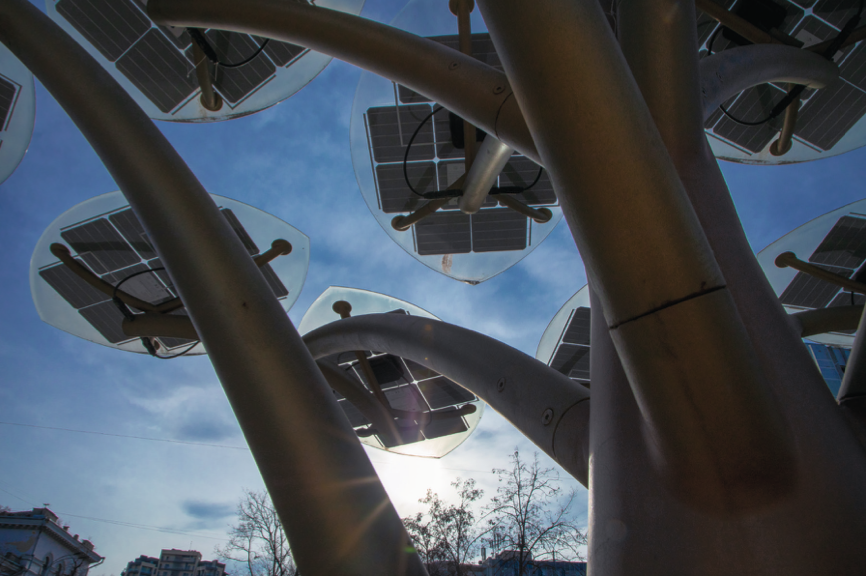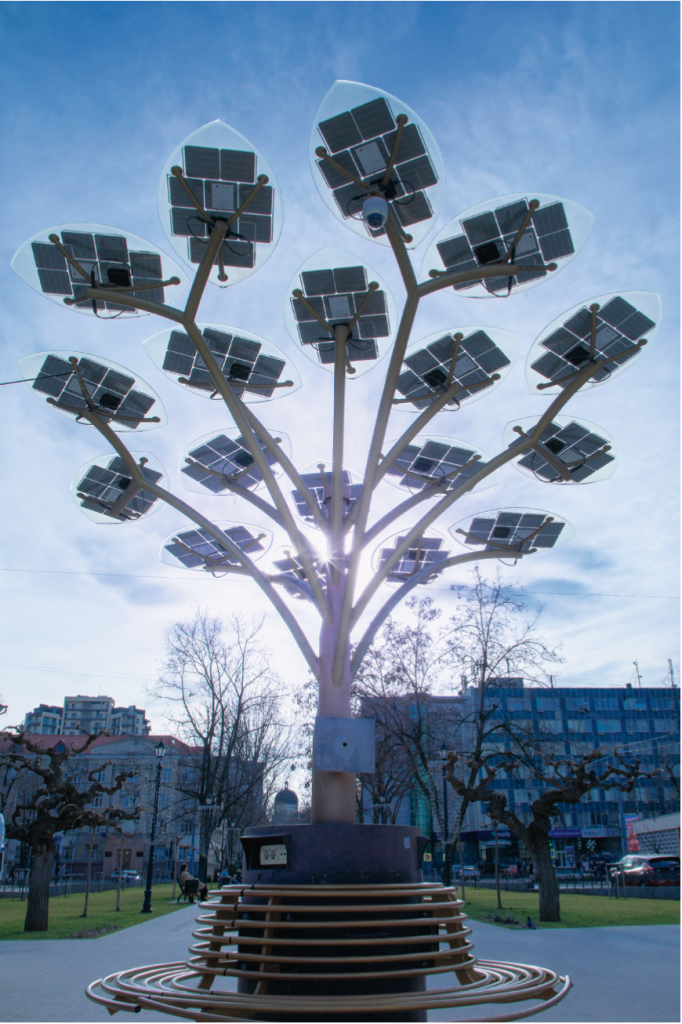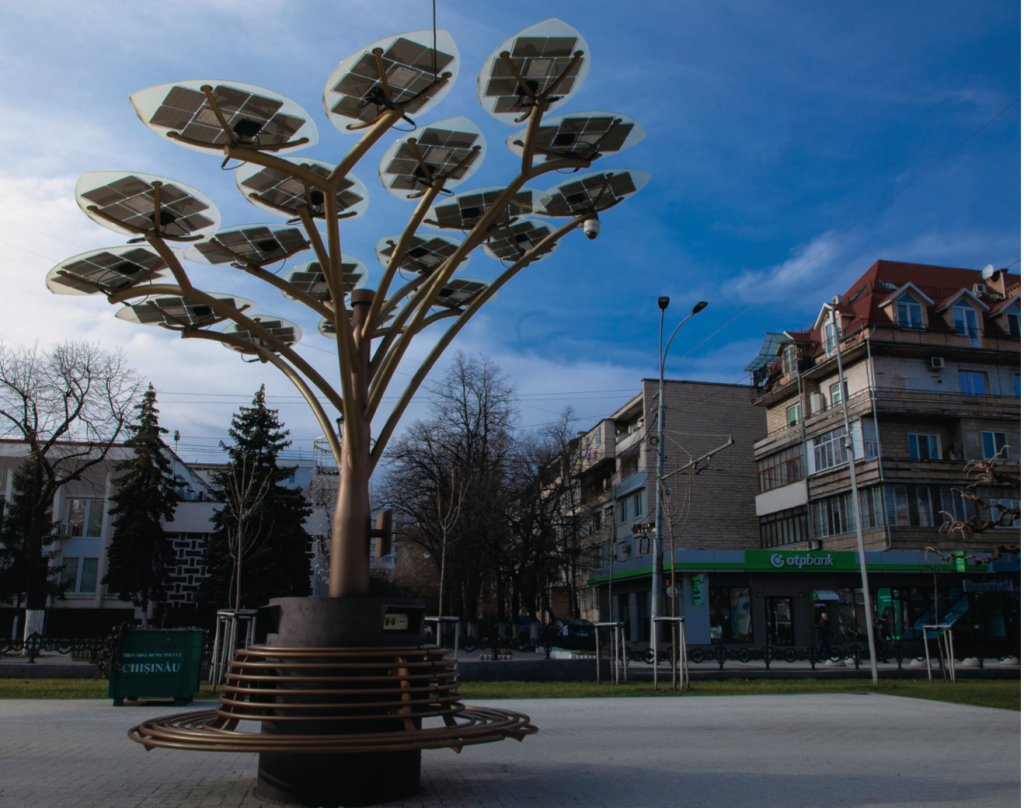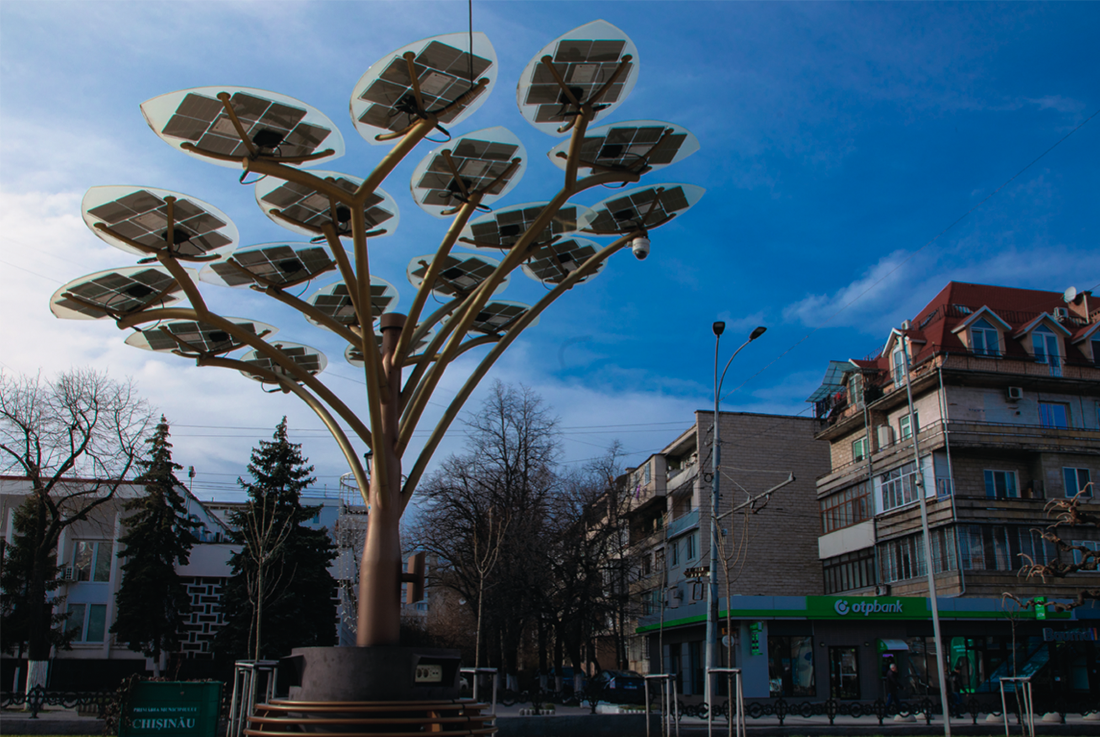Recently Chisinau, Moldova’s capital, “grew” trees sporting small solar panels. They were introduced as part of the United Nations Development Programme and in partnership with the Municipality of Chisinau.
Solar trees are a wonderful landscaping feature. They look modern and stylish, they blend into the environment and attract the attention of passersby. They serve as em- bellishments for alleys, boulevards, and avenues. Besides their aesthetic functions, these “trees” have other significant ben- efits. They generate up to 800 kWh per day from a superabundant renewable source. This results in an annual reduction of CO2 emissions of about 700 kg, as well as in im- proved air quality.
Solar trees are an excellent example of efficient space utilisation, too. In urban en- vironments, where space is limited, such solar panels allow for the utilisation of verti- cal space. Traditional solar power stations typically require extensive land, making them less feasible, especially in densely populated urban areas. Solar trees help address this issue, and although they do not generate enormous quantities of clean energy, they are still sufficient for powering less energy-intensive processes.
A less obvious function is educational. The appearance of these installations in Moldova’s capital sparked curiosity among local residents. Even adults, like children, were amazed by these innovative elements of urban landscaping. The solar panel trees have thus been able to increase people’s interest in and understanding of the various climate challenges and environmental is- sues we face.
And the great thing is anyone can experi- ence the benefits of this modern ecological design firsthand, because the solar trees’ trunks are fitted with sockets and USB ports. So they not only help the environment, but also offer help to the city’s residents and visitors who need a little more power for their devices.





